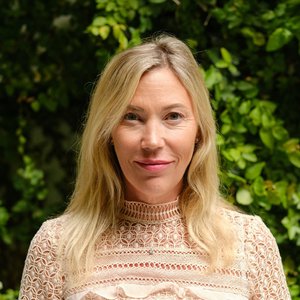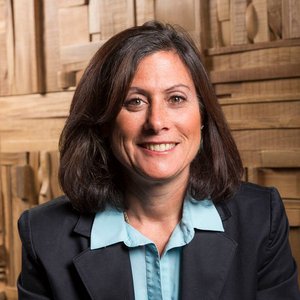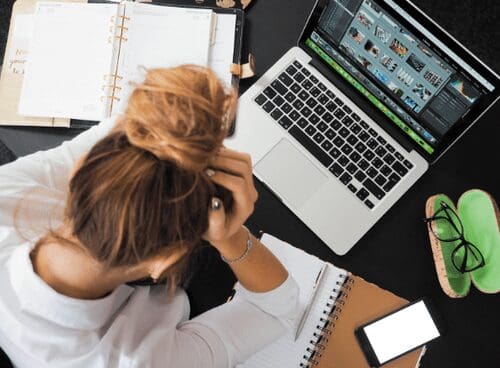
Article provided by Marie Angselius-Schönbeck, Chief Impact Officer at Artificial Solutions
There is no reason for such an imbalance. Yet, it is impossible to ignore in my sector – Conversational AI – that the more senior the group, the fewer women there are in leadership positions.
We’re trying to do something about that at Artificial Solutions. We have achieved a ratio of 38% women in managerial positions and we are committed to achieving a 50/50 ratio at the earliest opportunity. But real change won’t be achieved if it is pursued by just a small group of companies. We need industry-wide commitment to the actions that will drive change.
To better understand what actionable steps we should be taking, we spoke with members of the AI Allies network and asked what they believed would have the greatest impact.

CHANGE THE WAY WE EDUCATE
“The biggest challenge starts at the very beginning with education and how we are socialised by our environment – parents, school etc.” commented Sarah Rojewskij, Manager of AI & Automation at Telefónica Germany.
She believes that change has to start at the beginning and go all the way to the top by:
- Educating parents on how to enable their girls at a young age not to follow stereotypes
- Enabling programs that address girls in particular to get their interest, focus and attention
- Revolutionising the education system in order not to pressure girls in certain career paths
The industry also has an important role to play here in helping girls, their parents and teachers understand the opportunities open to them.
“We need to start cultivating dreams, providing girls in school with great examples of women driving the AI industry, explaining their path to them and how they became who they are,” advocated Daniela Colombo, Data & AI, IOT and App Innovation Tech Lead at Microsoft.

REVIEW HIRING AND PROMOTION PRACTICES
Gavriella Schuster, former Corporate Vice President for Microsoft and now Advisory Board Chairwoman at Artificial Solutions, believes intentional recruitment is a critical step to bringing more women into the industry. “The AI industry needs to make a concerted effort to recruit more women into the field, work on allyship as a way of creating a more welcoming culture for women to bring their whole selves and best ideas into the industry, and recognise and reward the contributions that women are making.”

To support this goal, Anne Jenkins, Senior Manager of Conversational AI at Valcon, thinks that hiring and promotion practices need to be reviewed. “We need blind CV screening as standard,” she commented. She also believes promotions cannot keep rewarding people that are polished and ambitious self-promoters who are good at playing the internal politics, or those threatening to find jobs elsewhere. Instead, promotions should reward those demonstrating the skills and qualities needed in leaders.
“Interview and promotion panels need to be balanced themselves, to help eliminate similarity bias (people like us) and affinity bias (people we connect with) in the decision making process. In short, we need to ensure that hiring and promotion decisions are not based on our gut feel and instead focus squarely on the qualities required for the role in question,” Anne continued.
ESTABLISH MORE FLEXIBLE WORKING PATTERNS

Another actionable step that Kate Taylor, Senior Consultant at CGI, called out was greater workplace flexibility. “Remote working opens the door for parents of young families and carers to have a more flexible work life balance, but still keep in touch with colleagues and peers. Although the balance is changing, it is still more likely to be women in that role. That flexibility addresses the challenge of balancing career and carer roles,” she commented.
Valcon’s Anne Jenkins agreed highlighting how “one positive to come out of the pandemic is the number of positions which now have a higher proportion of remote working.”
But she also added that “we need to make sure that remote workers themselves are not disadvantaged, and are as likely to be encouraged and promoted by their managers as their in office colleagues.”

BUILD COMMITTED NETWORKS
“I think it’s nice to have a network where it’s okay to express your doubts and get confirmation on your abilities,” shares Alice Boter, Conversation AI Designer, Financial Services at CGI.
“In a network with women you get more often fantastic, honest, constructive open discussions and we like to strengthen each other.”

These can be within groups within our workplaces. Laura Krumina, VA Development Lead, Operational Excellence – Digital Customer Service Solutions at Circle K, highlighted how the company has a global workgroup that pinpoints issues around diversity and then tackles them. “It acts as a network for women across our international organisation to highlight issues and get resolutions. If this didn’t exist then the voices of women may not be heard and we would all suffer as a result.”
It is also important for the wider industry to come together. Across the AI industry, there are many organisations where fighting for change can feel very lonely. That is why networks – like AI Allies which all our contributors are part of – are so important to offer inspiration, support and mentorship.

Together we can become powerful agents of change. Not merely creating ripples across our industry, but a wave of change that will help us close the gender gap in AI.
To quote my colleague, Conversational AI Specialist Britta Guldmann, “we need to make sure that the AI of tomorrow is for everybody.”








